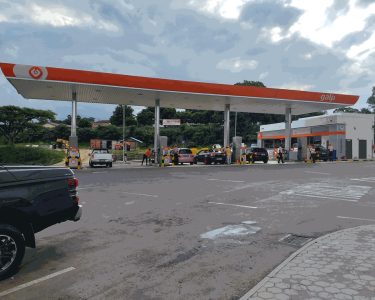
By Phephile Motau and Sifiso Sibandze
From the E186 million dividend declared by the Royal Eswatini Corporation (RES) for the financial year ended March 2022, Tibiyo Taka Ngwane has pocketed E98.7 million which accounts for its 53.1 per cent shareholding in the country’s biggest sugar producer.
This is contained in RES’ 2022 Integrated Annual Report. Other shareholders of RES are RCL Foods with 29.1 per cent, the Nigerian government which holds 29.1 per cent, the Eswatini government with 6.5 per cent and individual shareholders with 1.3 per cent. RCL Foods received about E54.1 million, the Nigerian government got E18.6 million, the Eswatini government pocketed E12.09 million and individual shareholders bagged E2.5 million.
Notably, the dividend declared was down by 24 per cent compared to 2021. In the previous year, the shareholders shared E245 million. This underscores that 2021/22 was a tough year for RES, characterised by low yields due to the drought in the previous season, followed by substantial rainfall and a cyclone in the latter half of the year. Added to the mix were the persistent Covid-19 pandemic, pests that affected the cane, and the socio-political unrest in June-July which saw 1 350 hectares of cane subject to arson and resulted in an estimated loss of E15.2 million profit after tax.
RES’ Managing Director Nick Jackson noted that their factories were impacted by more rains than normal towards the end of the crushing season, resulting in extended periods of slow crush and the season finishing five weeks later than planned. “Our performance was consequently disappointing, with profits of just E303 million, coming off the record E508 million reported in the previous year. A stronger-than-expected exchange rate served to worsen the difficult situation,” Jackson said.
The MD went on to say unit production costs remained under pressure driven by the impact of the Russia-Ukraine war on fertiliser and fuel prices. Nevertheless, Jackson expressed his delight that both mills (Mhlume and Simunye) were rated among the top six on efficiency and overall recoveries for the third year running, out of the 27 Southern African sugar factories.
Jackson highlighted that one of the major risks facing the Eswatini sugar industry is the South African Sugar Chain Master Plan with its goal of optimising the South African market. He said the Master Plan could threaten future sales of Eswatini sugar into South Africa should buyers move to exclude sugar from Eswatini from the supply chain.
“We will be evaluating alternative potential revenue streams such as becoming a low-cost producer of a substrate that is ultimately a high-value renewable product. One option is to turn sugar into polylactic acid which can be turned into bioplastics. Bioplastics can then be converted into products such as cell phone covers, dashboards for cars and cups,” he said.
Furthermore, Jackson disclosed that a feasibility study is underway to ascertain alcohol consumption patterns in the sub-Saharan African market. He said: “This is a growing market and an excellent opportunity to augment downstream revenue.” “This would be a good platform for quick turnover products that can fund our longer-term vision of producing top-quality aged rum.”
Still on course of upscaling electricity production
The Royal Eswatini Sugar (RES) Corporation’s plans to become a large-scale electricity producer in the next few years are still well underway.
RES Managing Director, Nick Jackson said the idea was very much alive and in their sights. The MD said: “Although the existing Eswatini’s power purchase agreement with South Africa will be renewed in 2025, Eswatini’s power supply will no longer be secured. This risk impacts directly on the sustainability of the RES business.”
He went on to say, against the backdrop of the power purchase agreement with South Africa coming up for renewal in 2025, RES is proactively formulating a comprehensive energy master plan to ultimately become energy self-sufficient. He said they are assessing the feasibility of renewable energy generation, such as solar plants and new biomass boilers for high-pressure steam and maximum electricity production so that they could be self-sufficient by 2026.
“We also hope to become a net exporter of power to the national grid in the longer term. Eswatini currently imports in the order of 70 per cent of its electricity from Eskom. There are also several opportunities for enhancing energy efficiency across RES’operations. Some form an integral part of the factory projects at Mhlume and Simunye, while others could potentially form part of a wider energy master plan, he said.




